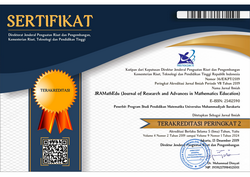Journal Information
Editorial Board Reviewers Focus and Scope Indexing and Abstracting Journal History Author Index
Information for Author
Author Guidelines Peer Review Proccess Publication Ethics Copyright Notice Privacy Statement Manuscript Submission Journal Business Model Digital Archiving Open Access Policy Sponsorships
Template
Template of Manuscript Cover Letter Response to Reviewer Form















